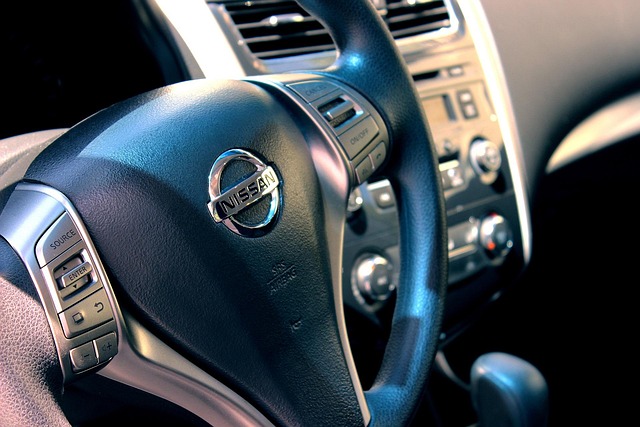Looking to register your car in California? This comprehensive guide breaks down the process step-by-step. From understanding key requirements for car registration in the Golden State to navigating the DMV VIN verification, we’ve got you covered. Learn what documents to gather, how to prepare your vehicle, and complete the registration process with ease. Plus, discover post-registration tasks like insurance, tags, and annual renewal.
- Understand the Requirements for Car Registration in California
- Gather Necessary Documents for DMV Vin Verification
- Prepare Your Vehicle for Inspection and Title Transfer
- Complete the DMV Registration Process Step-by-Step
- Post-Registration Steps: Insurance, Tags, and Annual Renewal
Understand the Requirements for Car Registration in California

Before you begin the registration process, it’s crucial to understand the requirements for car registration in California. The California Department of Motor Vehicles (DMV) mandates several key steps, including a thorough vehicle inspection and verification of your car’s Vehicle Identification Number (VIN). This VIN verification process ensures that your vehicle meets all safety and environmental standards before it can be legally registered.
One important aspect is ensuring your car passes the state’s emission standards through a smog test. Additionally, you may need to undergo a safety inspection to verify the condition of critical components like brakes, lights, and tires. To streamline this process, some individuals opt for a mobile vin verifier or vin inspection service that can perform these checks efficiently. This alternative approach, involving a mobile vin verification, allows you to save time by having the necessary inspections completed conveniently at your location.
Gather Necessary Documents for DMV Vin Verification

Before you can register your car in California, you’ll need to undergo a DMV VIN (Vehicle Identification Number) verification process. This step is crucial as it ensures that your vehicle meets all necessary safety and environmental standards. To make this process smoother, gather all the essential documents required for the VIN inspection. These typically include the vehicle’s title, registration certificate, proof of insurance, and a valid driver’s license. Additionally, have your vehicle’s VIN readily available—this unique 17-character code is often found on the vehicle’s dashboard or in the driver’s side door jamb.
For convenience, many California residents opt for a mobile vin verifier or conduct a quick vin inspection online. These services streamline the process by allowing you to verify your car’s information from the comfort of your home or even while on the go. With all your documentation prepared, you’ll be one step closer to officially registering your vehicle with the DMV.
Prepare Your Vehicle for Inspection and Title Transfer

Before heading to the DMV for registration, it’s crucial to prepare your vehicle for both inspection and title transfer. Start by ensuring your vehicle is safe to drive and in compliance with California’s emission standards. Gather all necessary documents, including your vehicle’s title, proof of insurance, and identification. The Vehicle Identification Number (VIN) will play a central role in the process, so make sure it’s accurate and readily available—you might even consider getting a mobile VIN inspection or verification to streamline things.
Additionally, clean your vehicle both inside and out. A clear window and unobstructed license plate are essential for a successful dmv vin verification. Make sure all lights, indicators, and wipers are functioning properly to pass the safety inspection. By preparing these aspects beforehand, you’ll make the registration process smoother and faster.
Complete the DMV Registration Process Step-by-Step

To complete the DMV registration process for a car in California, follow these straightforward steps. First, gather all necessary documents, including your vehicle’s registration certificate from the previous state, proof of insurance, and a valid driver’s license. Next, visit your nearest California DMV office or utilize their online services for convenient remote registration.
Once at the DMV, you’ll need to undergo a crucial step: DMV VIN verification. This involves providing your Vehicle Identification Number (VIN) for inspection. You can facilitate this process with a mobile vin verification service to streamline and expedite the vin inspection, making it an efficient part of your registration journey. After verifying your vehicle’s details, you’ll be issued a new California vehicle registration and license plate.
Post-Registration Steps: Insurance, Tags, and Annual Renewal

After successfully registering your vehicle with the California DMV, there are a few key steps to complete before hitting the road. One of the most important is obtaining insurance coverage that meets the state’s minimum requirements. You’ll need to show proof of this when renewing your registration or dealing with any future traffic stops. Additionally, you’ll receive license plates and a vehicle registration card. These must be displayed as required by California law.
Remember to keep your registration up-to-date through annual renewal. This process typically involves updating your information, paying the necessary fees, and verifying your vehicle’s Vehicle Identification Number (VIN) with the DMV. Several convenient options are available for this, including online renewal or using a mobile vin verifier like our app for quick and easy VIN inspection—ensuring you’re in compliance without hassle.
Registering a car in California involves several steps, from understanding the requirements to completing the DMV registration process. By gathering necessary documents for DMV VIN verification, preparing your vehicle for inspection and title transfer, and following the step-by-step guidelines provided, you can ensure a smooth and efficient registration experience. Remember to prioritize post-registration tasks such as insurance, tags, and annual renewal to keep your vehicle legally compliant and on the road.



